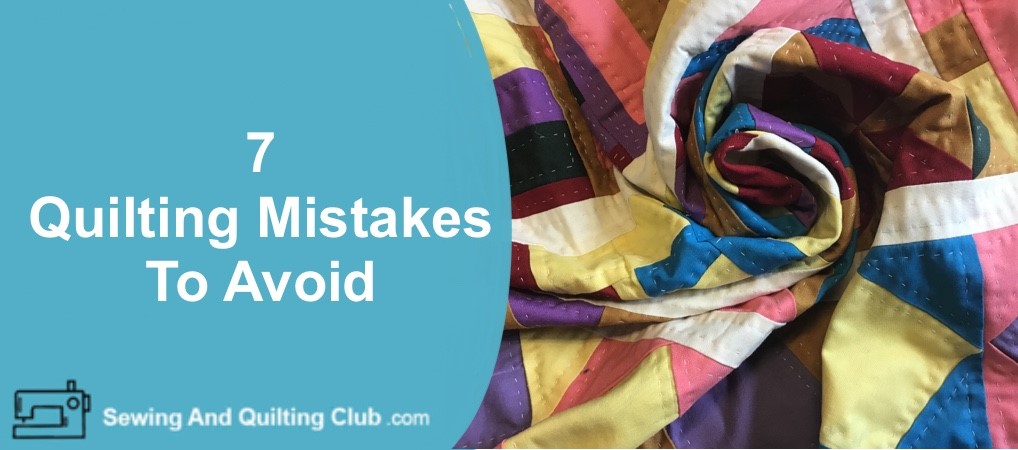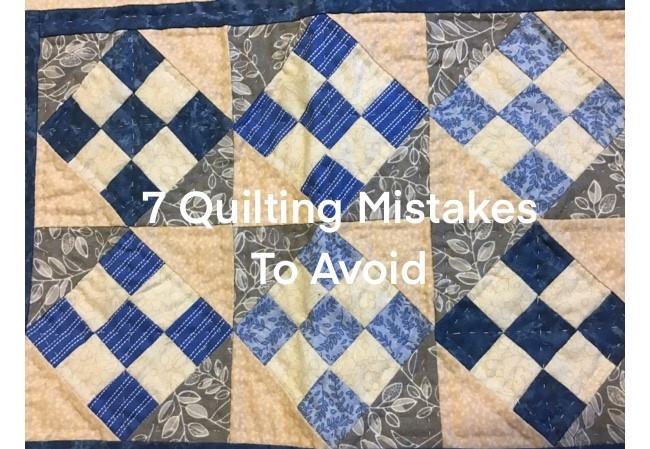As a new quilter you might want to start making a beautiful quilt, but you might end with tons of small fabric pieces and with a big project to make that might take weeks, months and even years to finish, this might happen to you and many other quilters, but there is a better way to make your quilts a success.
Quilting Mistakes To Avoid when you’re a beginner and you might want an advanced quilter to tell you, on this post I will share some mistakes I did as a beginner and what I’ve learned after a few years of making quilts.
Learning the steps to follow when you start making quilts, will help you to know what to expect in advance and why you need to have everything ready before you start working on your new quilt, by doing this, there will be more chances that you enjoy your time working on every step of making a quilt: piecing, quilting and finishing your quilt.
1. Not Pre-Washing Your Fabrics Before Starting Any Project
Who wants to spend some time pre-washing fabrics, when the fun is to cut the fabric and start piecing to make those beautiful blocks to make a new quilt.
I guess many quilters just want to start stitching up the new block to see how it looks like, but I learned to never to skip the step of pre-washing quilting fabrics before making any quilt the hard way.
When you see a quilt made with a fabric that starts bleeding with weather humidity! That is the worst thing that can happen to any quilter, for that reason it is always better to spend some time pre-washing and ironing your fabrics before you start any quilting project.
2. Not Measuring Your Fabric Correctly
I started making quilts before the rotary cutter and quilting rulers, I learned how to make quilting templates on paper and trace each piece on the fabric with a pencil to cut them with a pair of scissors, that process could take days and even weeks to get all the pieces needed to make a quilt, and some times these pieces were not accurately cut, making it hard to make any quilt block perfect.
Today any quilter has many quilting tools to help you to cut all your pieces for your new quilt measured and cut with accurate measures, by doing this, you have it half-way done, you’re stitching work will be easier and you will get accurate results to help you to get all your blocks almost perfect to assemble your quilt.
3. Stitching Problems
Whether you do the stitching process to make a quilt by hand or with you’re sewing machine, the seam allowance should be the same all the time.
If you’re new to quilting, you might need some time to mark the 1/4 inch seam allowance on your fabric pieces before you start stitching, this might look like a waste of time, but believe me if you spend your time making the 1/4 inch seam allowance on all your pieces, this step will help you to get accurate stitching and you won’t need to spend anytime using the seam ripper.
It takes time to get used to stitching the 1/4 inch seam allowance, but believe me, soon you will notice when you get used to it you won’t need to mark your pieces.
Some sewing machines come with 1/4 inch presser foot, which will help you to stitch up your pieces faster with accurate results, if your machine doesn’t have it, you can always check if your model can use one 1/4 inch presser foot from your machine’s brand or not, in case it does, all you need is to purchase one and you can set up your machine with it.
In case you’re sewing machine doesn’t have a 1/4 inch presser foot, you always can stick a 1/4 inch masking tape on your machine to help you to get the accurate seam allowance when sewing your new quilt.
4. Trimming Blocks To Size
As you start making your new quilt blocks, you might notice some are made perfect and some are not, and this can happen to any quilter, beginners or to the most experienced quilter.
Take your time to trim your blocks to the accurate size for your new quilt, by doing this you will have no problem in stitching up your quilt block
5. Waving borders
When you finish sewing on all the blocks for your new quilt, it’s time to add the borders, and the easiest way to add a border to a quilt is by stitching up two or more strips of fabric and then sew on this strip to each side of the quilt, cutting the strip on each side when you reach the end of each side, but this method can make quilt borders to get wavy and this can make your quilt hard to square.
The right way to add a border on a quilt top is by measuring both sides, sew on two or more pieces of fabric to get the length for each side and pin each strip on each side of the top and sew on, remove all the pins and open the borders on both sides and take the measure on the top and on the bottom of the top, sew on two or more pieces of fabric to get the length of each strip and sew on the top border and the bottom border. Open both borders and press.
6. Start Making A Regular Size Quilt
When you’re a beginner, you might want to make a regular size quilt as your first project to do, but making a quilt can take a few days, weeks and even months.
Just some advice, if you’re starting quilting as your new hobby, always start with a small project to make, it will help you to finish it in the same day or in a couple of days, and getting your first quilt finished is the best feeling you can have as a quilter.
Then look for a bigger project, like a baby quilt or a lap quilt, it might take you longer to finish, but you will get it done.
After finishing a few small projects, you might want to make a regular size quilt.
7. Start With An Easy Quilt Pattern
Who wants to make the traditional square pattern when there are so many beautiful quilts to make!
But when you start making your first quilt with a basic and easy quilt pattern like the Trip Around The World or Nine Patch, it will help you to work fast and you will learn the basic of quilt making with this project.
Choose as your second project a Quilt Pattern that requires more skills, like triangles or maybe the hexies quilt, and grow your piecing and quilting skills.
Before you notice you will start working on an intermediate or advanced quilting skill level.
Related: Can You Use Sheets For Quilt Backing?
Closing
Making a quilt is a hobby everyone can make, there is a learning curve at the beginning, take your time to enjoy every step of making your new quilt.
We hope that by sharing these Quilting Mistakes To Avoid, can help you to learn more about the making a new quilt process and get everything you need before you start your new project.
Making a quilt might take some days, weeks and even months to finish, every step is important, take your time and enjoy your work, it will make your quilt beautiful and unique!
Happy Quilting!



